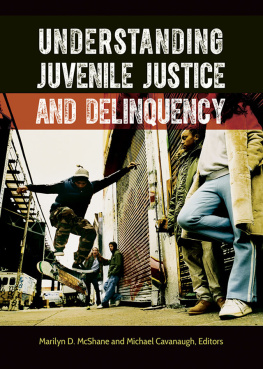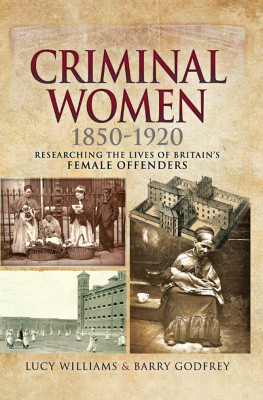Pagebreaks of the print version

CRIMINAL CHILDREN
FAMILY HISTORY FROM PEN & SWORD
Tracing Secret Service Ancestors
Tracing Your Air Force Ancestors
Tracing Your Ancestors
Tracing Your Ancestors from 1066 to 1837
Tracing Your Ancestors Through Death Records
Tracing Your Ancestors Tiuough Family Photographs
Tracing Your Ancestors Using the Census
Tracing Your Ancestors Childhood
Tracing Your Ancestors Parish Records
Tracing Your Aristocratic Ancestors
Tracing Your Army Ancestors 2nd Edition
Tracing Your Birmingham Ancestors
Tracing Your Black Country Ancestors
Tracing Your British Indian Ancestors
Tracing Your Canal Ancestors
Tracing Your Channel Islands Ancestors
Tracing Your Coalmining Ancestors
Tracing Your Criminal Ancestors
Tracing Your East Anglian Ancestors
Tracing Your East End Ancestors
Tracing Your Edinburgh Ancestors
Tracing Your First World War Ancestors
Tracing Your Great War Ancestors: The Gallipoli Campaign
Tracing Your Great War Ancestors: The Somme
Tracing Your Great War Ancestors: Ypres
Tracing Your Huguenot Ancestors
Tracing Your Jewish Ancestors
Tracing Your Labour Movement Ancestors
Tracing Your Lancashire Ancestors
Tracing Your Leeds Ancestors
Tracing Your Legal Ancestors
Tracing Your Liverpool Ancestors
Tracing Your London Ancestors
Tracing Your Medical Ancestors
Tracing Your Merchant Navy Ancestors
Tracing Your Naval Ancestors
Tracing Your Northern Ancestors
Tracing Your Pauper Ancestors
Tracing Your Police Ancestors
Tracing Your Prisoner of War Ancestors: The First World War
Tracing Your Railway Ancestors
Tracing Your Royal Marine Ancestors
Tracing Your Rural Ancestors
Tracing Your Scottish Ancestors
Tracing Your Second World War Ancestors
Tracing Your Servant Ancestors
Tracing Your Service Women Ancestors
Tracing Your Shipbuilding Ancestors
Tracing Your Tank Ancestors
Tracing Your Textile Ancestors
Tracing Your Trade and Craftsmen Ancestors
Tracing Your Welsh Ancestors
Tracing Your West Country Ancestors
Tracing Your Yorkshire Ancestors
CRIMINAL CHILDREN
Researching Juvenile Offenders 18201920
Emma Watkins and Barry Godfrey
First published in Great Britain in 2018 by
PEN & SWORD FAMILY HISTORY
An imprint of Pen & Sword Books Ltd
Yorkshire Philadelphia
Copyright Emma Watkins and Barry Godfrey, 2018
ISBN 978-1-52673-080-1
eISBN 978-1-52673-809-7
Mobi ISBN 978-1-52673-810-3
The right of Emma Watkins and Barry Godfrey to be identified as the authors of this work has been asserted by them in accordance with the Copyright, Designs and Patents Act 1988.
A CIP catalogue record for this book is available from the British Library.
All rights reserved. No part of this book may be reproduced or transmitted in any form or by any means, electronic or mechanical including photocopying, recording or by any information storage and retrieval system, without permission from the Publisher in writing.
Pen & Sword Books Ltd incorporates the imprints of Aviation, Atlas, Family History, Fiction, Maritime, Military, Discovery, Politics, History, Archaeology, Select, Wharncliffe Local History, Wharncliffe True Crime, Military Classics, Wharncliffe Transport, Leo Cooper, The Praetorian Press, Remember When, White Owl, Seaforth Publishing and Frontline Publishing.
For a complete list of Pen & Sword titles please contact
PEN & SWORD BOOKS LTD
47 Church Street, Barnsley, South Yorkshire, S70 2AS, England
E-mail:
Website: www.pen-and-sword.co.uk
or
PEN & SWORD BOOKS
1950 Lawrence Rd, Havertown, PA 19083, USA
E-mail:
Website: www.penandswordbooks.com
CHAPTER ONE
INTRODUCTION
T his book explores how offending children were dealt with from the early nineteenth century to the early twentieth century. Over this 100-year period, ideas about how children should behave, and how they should be corrected when they misbehaved, changed dramatically. Indeed, it was the period in which juvenile delinquency is said to have been invented, when the problems of youth crime and youth gangs developed, and society began to ask, for the first time, how do we stop criminal children from developing into criminal adults? There were various experiments in reformation, ranging from transporting child convicts to Australia, to the creation of separate juvenile prisons, and the establishment of reform schools. But did any of these things actually work? This book reveals the lives of some of the thousands of children who were transported, imprisoned or kept in reformatory or industrial schools for years, to see how their lives turned out in reality.
In October 1872 the Morpeth Herald reported that two boys had been apprehended for housebreaking. At Newcastle Crown Court Richard Clement Fisher and Henry Leonard Stephenson were charged with housebreaking and theft. Henry, whose picture appears on the cover of this book, was a 12-year-old dark-haired boy with hazel-coloured eyes. In the dock he pulled himself up to his full height of 4 foot 5 inches to hear the defence and prosecution speeches. During the previous six weeks, several unoccupied houses in the area had been broken into and their contents ransacked. Detective Anderson stated in his evidence that he had spied the two prisoners acting suspiciously and he marched them to their parents houses. Turning out the boys pockets revealed a bunch of keys. One opened a small wooden box which contained some money and jewellery that had been stolen from the houses. In front of his grandmother, who was his guardian, and the detective, Henry admitted that he and his mate were responsible for the break-ins.
In court, Richard Fishers parents said that all the stolen property had been restored and that Richard would be sent away to serve in the Navy. The parents asked for a merciful consideration of the case. They claimed that the boys had really broken into these houses, not so much for the purpose of stealing the property, as from an idea that they were doing heroic and manly acts, having perhaps been reading the wrong sort of books. Witnesses were called, who gave the boys good characters, and it was stated that Henry Stephenson would be sent to India if he was released from the court. The prosecutors stated that they did not wish to continue the case, but it was out of their hands as by then the court had completely taken charge of the proceedings. Richard Fisher was sentenced to four months imprisonment with hard labour, and Henry Stephenson to two months imprisonment. The court was probably convinced the boys would leave the country, and that is why the Judge did not send them to a reformatory where they would have stayed for a number of years.
The courts had many options when it came to sentencing children in this period. Many of the boys and girls mentioned in this book would have been confined to reformatories or industrial schools in order to give them a measure of punishment but also to train them in employment skills (and sometimes just to take them away from abusive or neglectful home lives); others were simply imprisoned, fined, or put on probation. A generation earlier, and the boys could have been sent to a foreign country for their punishment. We will examine the lives of children who were transported to Australia as convicts (a system which lasted from 1788 to 1868), and those who suffered other punishments. We will also explain how we know so much about the young people in this book, and how contemporary sources can be used to reconstruct the lives of boys and girls who got into trouble with the courts in the Victorian and Edwardian periods.












